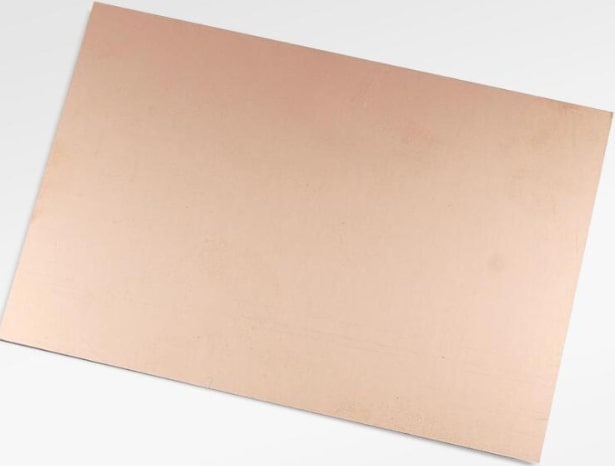FR4 is a widely used material in printed circuit boards (PCBs). It is a composite material made of epoxy resin and fiberglass, known for its excellent electrical insulation, mechanical strength, and thermal stability, making it extensively utilized in the electronics industry. In electronic design, the conductivity of FR4 is an important parameter that directly impacts the performance and stability of circuits.
FR-4 refers to a flame-resistant material grade, meaning the resin material must be capable of self-extinguishing under combustion. It is not the name of a specific material but rather a classification, with a variety of materials falling under the FR-4 grade. Most commonly, these materials are composites of tetra-functional epoxy resin with fillers and fiberglass.
Key characteristics include:
Electrical Insulation: FR4 is renowned for its superior electrical insulation properties, making it particularly effective in high-frequency and high-voltage applications. This excellent insulation ensures circuit stability, reduces signal interference, and makes it suitable for critical components in various electronic devices.
Mechanical Strength: FR4 has high mechanical strength and toughness, enabling it to withstand physical stress and impacts encountered during regular use. Whether facing vibration, shock, or other mechanical loads, FR4 provides reliable protection, extending the lifespan of PCB. Its robustness makes it popular in fields requiring high durability, such as consumer electronics, communication devices, and industrial control systems.
Thermal Stability: FR4 also offers good thermal stability, maintaining its integrity at high operating temperatures without significant thermal deformation or aging. This thermal stability ensures that the PCB maintains its performance and structural integrity even in harsh working conditions.
Compared to CEM1 and CEM3, FR4 has a lower conductivity but higher conductivity than high-frequency materials such as polyimide (PI). This comparison helps in selecting suitable materials for specific applications.

FR4's advantages lie in its good mechanical strength and cost-effectiveness, though polyimide may be more appropriate for high-frequency applications.
Conductivity Measurement Techniques
Accurately measuring the conductivity of FR4 requires appropriate experimental techniques:
Experimental Methods: Common methods include the four-probe method, Hall effect measurement, and impedance analysis. The four-probe method can effectively measure material conductivity, while Hall effect measurement can further analyze the characteristics of charge carriers in the material.
Standards and Guidelines: Relevant standards, such as IPC-2221, provide guidelines for measuring the conductivity of FR4, ensuring reliable results and comparability between different laboratories.
Conductivity Analysis
The conductivity of FR4 primarily depends on its composition and manufacturing process. Generally, FR4 is an electrically insulating material, with conductivity close to zero. However, in practical use, FR4 may exhibit slight conductivity due to several factors:
Material Purity: Impurities and additives in FR4 can slightly increase its conductivity. For example, impure epoxy resin or a high level of impurities in fiberglass may affect conductivity.
Environmental Factors: The conductivity of FR4 may be influenced by humidity and temperature. High humidity may cause the material to absorb moisture, raising its conductivity, while high temperatures can impact its insulation properties.
Manufacturing Process: Conditions such as temperature, pressure, and curing time during production can also affect FR4's conductivity. Strictly controlling these parameters ensures the expected insulation performance of the material.
The Impact of Environmental Factors on FR4 Conductivity
1. Humidity and Conductivity
FR4’s conductivity significantly increases in high-humidity environments because the epoxy resin in FR4 undergoes electrical changes after absorbing moisture. Humidity impacts FR4 in two main ways:
Moisture Absorption: FR4, made of epoxy resin and fiberglass, may see a reduction in insulation performance when the epoxy resin absorbs moisture under high humidity. This moisture absorption increases the number of charge carriers within the material, leading to a rise in conductivity.
Conductivity Changes: Moisture-absorbed FR4 may form a conductive layer or create conductive paths within the material, raising its conductivity. This effect is more pronounced in high-humidity conditions. To address this, designers often implement moisture-resistant measures, such as using coatings or selecting materials with lower moisture absorption, to ensure stable PCB performance in humid environments.
2. Temperature Variation
High temperatures mainly affect FR4 through changes in conductivity and insulation performance:
Thermal Stability: FR4's thermal stability is a crucial feature in high-temperature environments. However, prolonged exposure to high temperatures can alter the material's physical and chemical properties. High temperatures may cause the degradation or softening of epoxy resin, impacting its insulation properties. While FR4 maintains performance within a certain temperature range, exceeding this range may lead to increased conductivity due to thermal degradation or plastic flow of the resin.
Long-Term High-Temperature Exposure: Long-term exposure to high temperatures can gradually reduce the insulation properties of FR4. This occurs because high temperatures increase molecular motion within the material, enhancing the mobility of charge carriers, which raises conductivity. When designing electronics for high-temperature environments, designers should consider this and either select suitable materials or modify FR4 to enhance its stability under high temperatures.
Conclusion
In practice, FR4's conductivity is critical to PCB performance. Although FR4 is primarily designed as an insulating material, changes in its conductivity can significantly affect circuit performance. Higher conductivity in FR4 may introduce additional conductive paths or alter signal transmission, leading to signal interference and crosstalk, especially in high-frequency applications. This interference can reduce signal clarity and, in turn, degrade overall circuit performance.
Furthermore, higher conductivity may increase electrical noise, negatively impacting circuit stability and raising system noise levels. To ensure stable and reliable PCB performance under various conditions, designers must pay close attention to the conductivity of FR4 when selecting materials, ensuring the chosen material meets performance requirements while minimizing signal interference and electrical noise.
In conclusion, FR4 is a material with excellent electrical insulation properties, and its conductivity should be close to zero under most conditions. Material purity, environmental factors, and manufacturing processes can all influence its conductivity. Understanding and controlling FR4's conductivity is essential for ensuring circuit performance and stability. By selecting high-quality FR4 materials and optimizing the manufacturing process, the conductivity can be effectively controlled, enhancing the overall quality and reliability of electronic products.